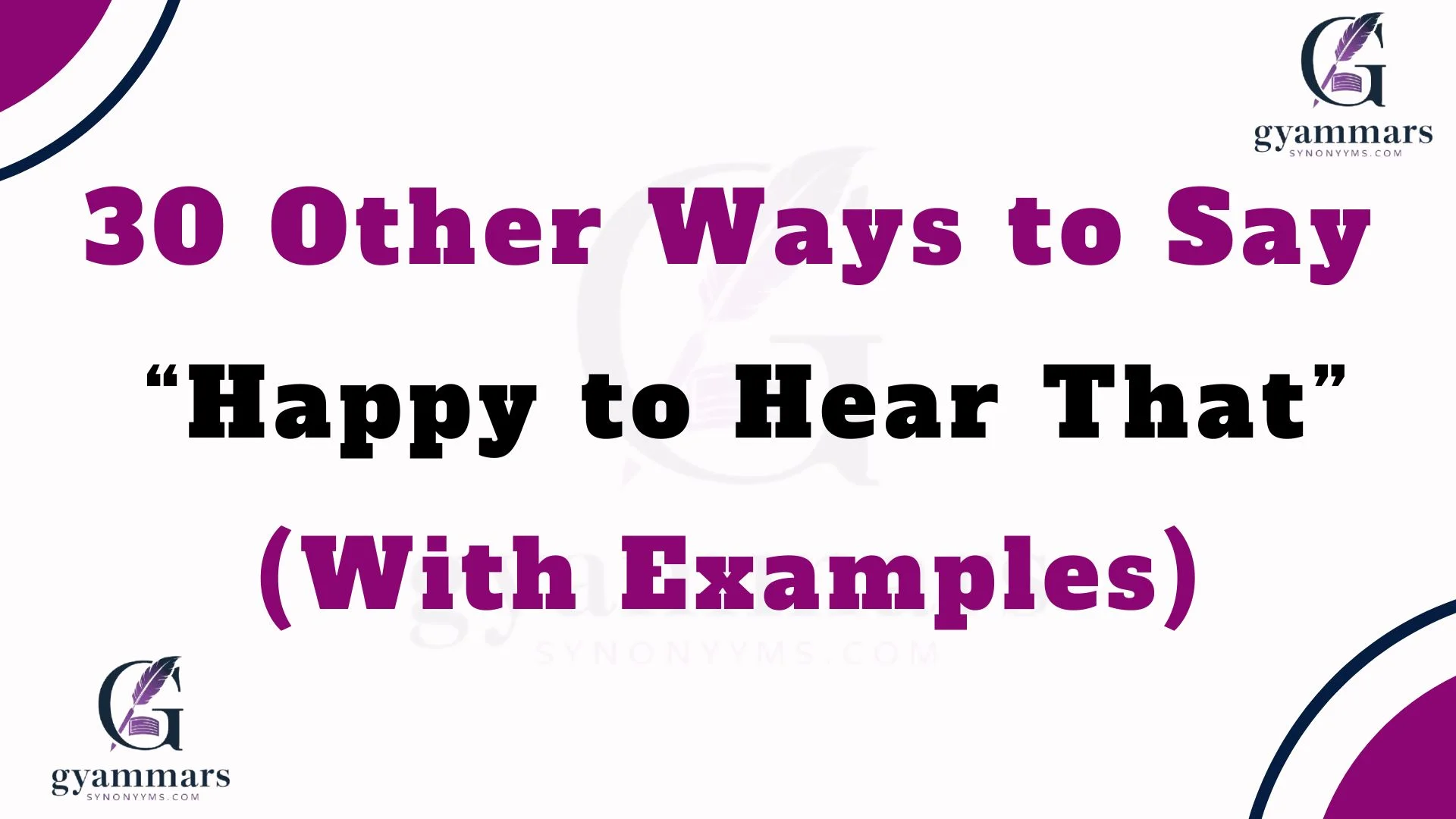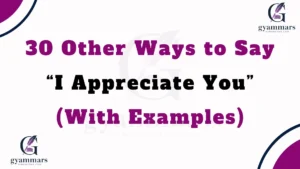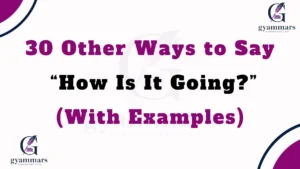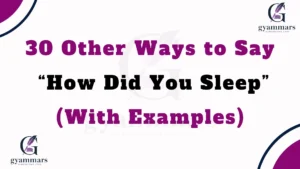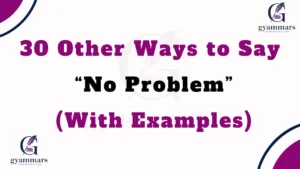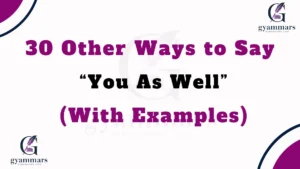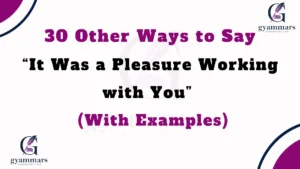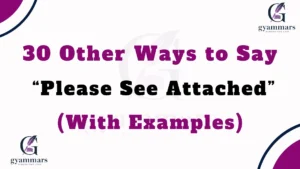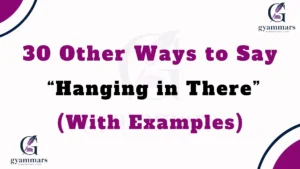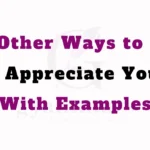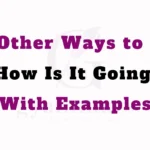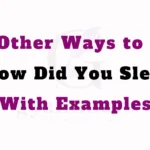Finding the right words to express warmth, care, and genuine happiness can make all the difference in communication. Saying “Happy to hear that” is a kind and thoughtful phrase, but sometimes, using fresh, personal alternatives adds more sincerity and emotional depth. Whether you’re texting a friend, replying professionally, or simply showing joy for someone’s success, these 30 alternative expressions will help you sound more authentic, empathetic, and engaging.
What Does “Happy to Hear That” Mean?
The phrase “Happy to hear that” expresses genuine pleasure or relief upon receiving good news or positive information from someone. It conveys support, appreciation, and empathy — letting the other person know their happiness matters to you.
For example:
- “I got the job!”
- “Oh, I’m happy to hear that! Congratulations!”
In essence, this phrase bridges emotional connection, signaling that you share in their joy or relief.
Is It Professional/Polite to Say “Happy to Hear That”?
Yes — “Happy to hear that” is both professional and polite. It fits perfectly in formal emails, customer conversations, and friendly chats alike. However, in corporate or business communication, using slightly polished alternatives like “Glad to know that” or “Pleased to hear that” can sound more refined.
Professional example:
“I’m happy to hear that the issue has been resolved.”
Friendly example:
“I’m happy to hear that your day went well!”
It’s versatile, kind, and universally positive, making it suitable for almost any tone — professional, friendly, or personal.
Pros and Cons of Saying “Happy to Hear That”
ProsConsWarm and friendly toneCan sound repetitive if overusedPolite and encouragingSlightly generic in emotional conversationsFits professional settingsLacks uniqueness in personal chatsExpresses empathy clearlyMay seem robotic in text messages
Tip: Mix in a few creative alternatives to sound more genuine and emotionally in tune.Here’s a quick list before we explore each in detail:
Synonyms For “Happy to Hear That”
- Glad to hear that
- That’s wonderful news
- I’m so pleased to know that
- That makes me smile
- I’m thrilled for you
- That’s awesome!
- So happy for you
- That’s really good to know
- I’m delighted to hear that
- That’s fantastic!
- That’s music to my ears
- I’m overjoyed to hear that
- That’s such great news
- I’m so relieved to hear that
- That truly makes my day
- That’s encouraging
- That’s a blessing
- I’m touched to hear that
- That’s heartwarming
- I’m so glad things worked out
- That’s really uplifting
- I’m grateful to hear that
- That’s beautiful to hear
- That’s just lovely
- I’m smiling for you
- That fills my heart with joy
- I’m beyond happy to hear that
- That’s such positive news
- That made my day
- That’s so nice to hear
Now, let’s explore each alternative in detail with meanings, examples, and best uses 👇
1. Glad to Hear That
Definition: A simple and friendly alternative expressing happiness for someone’s good news.
Explanation: It’s slightly more natural in everyday speech than “happy to hear that.”
Example:
“I finally finished my thesis!” “Oh, glad to hear that!”
Best Use: Informal and semi-professional conversations.
Tone: Warm, casual, and friendly.
Additional Notes: Perfect for quick responses that sound genuine and conversational.
2. That’s Wonderful News
Definition: An expressive way to show enthusiasm and positivity for someone’s update.
Explanation: This phrase conveys delight while adding more energy than the plain “happy to hear that.”
Example:
“We’re expecting a baby!” “That’s wonderful news! Congratulations!”
Best Use: Ideal for joyful or exciting announcements.
Tone: Cheerful and celebratory.
Additional Notes: Great for personal or heartfelt messages.
3. I’m So Pleased to Know That
Definition: A polished and sincere expression of happiness.
Explanation: This phrase adds professionalism while maintaining warmth.
Example:
“The client loved our proposal.” “I’m so pleased to know that!”
Best Use: Emails, professional feedback, or customer support.
Tone: Respectful and formal.
Additional Notes: Use this when writing to superiors, clients, or customers.
4. That Makes Me Smile
Definition: A sweet and emotional response showing genuine happiness.
Explanation: It goes beyond politeness — expressing personal joy for the other person.
Example:
“Mom is feeling much better.” “That makes me smile.”
Best Use: For friends, family, or romantic contexts.
Tone: Warm, tender, and caring.
Additional Notes: Adds emotional depth and authenticity.
5. I’m Thrilled for You
Definition: Shows strong excitement and joy for someone’s achievement.
Explanation: This is a more emotionally charged version of “happy to hear that.”
Example:
“I got promoted!” “I’m thrilled for you! You earned it.”
Best Use: Celebrating milestones or successes.
Tone: Energetic and supportive.
Additional Notes: Sounds best in spoken or text congratulations.
6. That’s Awesome!
Definition: Casual and enthusiastic — perfect for friendly chats.
Explanation: Conveys genuine excitement and positive energy.
Example:
“I passed my driving test!” “That’s awesome! Well done!”
Best Use: Friends, peers, or social settings.
Tone: Playful and upbeat.
Additional Notes: Avoid in very formal messages.
7. So Happy for You
Definition: A warm and empathetic expression of shared happiness.
Explanation: It directly acknowledges the other person’s joy.
Example:
“We got engaged!” “I’m so happy for you!”
Best Use: Personal or emotional moments.
Tone: Heartfelt and affectionate.
Additional Notes: Works beautifully in supportive messages.
8. That’s Really Good to Know
Definition: A polite and professional way to show appreciation for positive information.
Explanation: Less emotional but still kind.
Example:
“The meeting went smoothly.” “That’s really good to know.”
Best Use: Business emails, feedback loops, or updates.
Tone: Polite, moderate, professional.
Additional Notes: Perfect for clients or coworkers.
9. I’m Delighted to Hear That
Definition: A refined way to express joy or satisfaction.
Explanation: Common in both formal and friendly contexts.
Example:
“The project was approved.” “I’m delighted to hear that.”
Best Use: Professional conversations or warm thank-you replies.
Tone: Elegant and positive.
Additional Notes: Adds sophistication to your message.
10. That’s Fantastic!
Definition: A lively expression of amazement and happiness.
Explanation: Adds an upbeat, enthusiastic flair to any good news.
Example:
“I got into my dream university.” “That’s fantastic! I knew you could do it.”
Best Use: Exciting or celebratory updates.
Tone: Joyful, bright, friendly.
Additional Notes: Use in informal and casual tone.
11. That’s Music to My Ears
Definition: An expressive idiom showing extreme delight after hearing great news.
Explanation: It conveys that the information is so pleasing that it feels like listening to beautiful music.
Example:
“The project’s been approved!” “That’s music to my ears!”
Best Use: Casual, friendly, or personal contexts.
Tone: Playful, expressive, and joyful.
Additional Notes: Great for making your response sound creative and lively.
12. I’m Overjoyed to Hear That
Definition: A heartfelt way to show immense happiness or relief.
Explanation: Adds emotional intensity, especially when you’ve been rooting for someone.
Example:
“My surgery went well.” “I’m overjoyed to hear that. What a relief!”
Best Use: Supportive or emotional updates.
Tone: Empathetic, caring, and deeply warm.
Additional Notes: Best for sincere or emotional responses.
13. That’s Such Great News
Definition: Simple and positive, often used to acknowledge an important update.
Explanation: Similar to “happy to hear that” but slightly more expressive.
Example:
“We finally closed the deal.” “That’s such great news! Well done.”
Best Use: Professional or social contexts.
Tone: Neutral, polite, encouraging.
Additional Notes: Works in both text and spoken communication.
14. I’m So Relieved to Hear That
Definition: Expresses genuine comfort or reassurance after worrying about something.
Explanation: Used when someone shares positive news after a stressful or uncertain situation.
Example:
“The tests came back negative.” “I’m so relieved to hear that.”
Best Use: Health, safety, or emotional scenarios.
Tone: Empathetic, calming, and kind.
Additional Notes: Conveys care and compassion perfectly.
15. That Truly Makes My Day
Definition: A joyful phrase showing that the news has brightened your mood.
Explanation: It makes your message sound personal and heartfelt.
Example:
“I finally got your letter.” “That truly makes my day!”
Best Use: Friendly, emotional, or grateful replies.
Tone: Warm, heartfelt, cheerful.
Additional Notes: Perfect for expressing shared happiness.
16. That’s Encouraging
Definition: A supportive and motivational phrase showing optimism.
Explanation: Used when the news brings hope or progress.
Example:
“The team’s performance is improving.” “That’s encouraging! Keep it up.”
Best Use: Professional settings or supportive feedback.
Tone: Optimistic and constructive.
Additional Notes: Sounds sincere without being overly emotional.
17. That’s a Blessing
Definition: Used to express gratitude or emotional relief.
Explanation: Shows spiritual or heartfelt appreciation for something good.
Example:
“My dad’s surgery went well.” “That’s a blessing. Thank goodness!”
Best Use: Personal, spiritual, or family conversations.
Tone: Grateful, gentle, and comforting.
Additional Notes: Adds emotional depth with a soulful touch.
18. I’m Touched to Hear That
Definition: Shows emotional appreciation or heartfelt connection.
Explanation: Used when someone shares kindness or gratitude toward you.
Example:
“You’ve made such a difference in my life.” “I’m touched to hear that. Thank you.”
Best Use: Sentimental or emotional exchanges.
Tone: Sincere, soft, and caring.
Additional Notes: Great for expressing genuine connection.
19. That’s Heartwarming
Definition: A beautiful phrase expressing warmth and joy from something touching.
Explanation: Used when someone shares kind or uplifting news.
Example:
“The kids raised money for charity.” “That’s heartwarming.”
Best Use: Kind, generous, or emotional stories.
Tone: Compassionate and warm.
Additional Notes: Ideal for social posts or kind moments.
20. I’m So Glad Things Worked Out
Definition: Shows empathy and happiness that a situation resolved positively.
Explanation: Often used when someone shares a successful outcome after struggle.
Example:
“Everything went smoothly in the end.” “I’m so glad things worked out!”
Best Use: Supportive and post-event conversations.
Tone: Reassuring, comforting.
Additional Notes: Balances empathy and positivity perfectly.
21. That’s Really Uplifting
Definition: A thoughtful way to express emotional or motivational encouragement.
Explanation: Used when the information brings hope or positivity.
Example:
“She’s recovering faster than expected.” “That’s really uplifting.”
Best Use: Supportive messages or motivational feedback.
Tone: Hopeful and kind.
Additional Notes: Adds positive emotional tone to a response.
22. I’m Grateful to Hear That
Definition: Conveys sincere appreciation or emotional relief.
Explanation: Used when the news impacts you personally or emotionally.
Example:
“Your family’s safe after the storm.” “I’m grateful to hear that.”
Best Use: Emotional or heartfelt discussions.
Tone: Thankful, humble, sincere.
Additional Notes: Adds depth to your empathy.
23. That’s Beautiful to Hear
Definition: Used to show deep emotional appreciation for good or kind news.
Explanation: Perfect when someone shares something touching or inspiring.
Example:
“My parents renewed their vows.” “That’s beautiful to hear.”
Best Use: Romantic or sentimental moments.
Tone: Gentle, romantic, thoughtful.
Additional Notes: Adds elegance and warmth.
24. That’s Just Lovely
Definition: Soft, affectionate phrase expressing delight or admiration.
Explanation: More emotional and tender than “happy to hear that.”
Example:
“We had a cozy dinner at home.” “That’s just lovely.”
Best Use: Friendly or emotional exchanges.
Tone: Warm, gentle, and kind.
Additional Notes: Often used in British or soft-toned English.
Also Read This :30 Other Ways to Say “I’m Sorry for Your Loss” (With Examples)
25. I’m Smiling for You
Definition: Shows shared joy and emotional connection.
Explanation: Expresses happiness that’s so real you’re smiling on their behalf.
Example:
“I finally finished my marathon!” “I’m smiling for you!”
Best Use: Emotional or celebratory contexts.
Tone: Playful, kind, and heartfelt.
Additional Notes: Adds emotional intimacy and friendliness.
26. That Fills My Heart with Joy
Definition: A deeply emotional phrase showing pure happiness.
Explanation: Used when the news deeply touches or moves you.
Example:
“Our community came together to help.” “That fills my heart with joy.”
Best Use: Meaningful or emotional updates.
Tone: Heartfelt, spiritual, compassionate.
Additional Notes: Perfect for genuine and tender replies.
27. I’m Beyond Happy to Hear That
Definition: An expressive, emphatic way of saying you’re extremely happy.
Explanation: Adds excitement and depth beyond the usual phrase.
Example:
“I passed all my exams!” “I’m beyond happy to hear that!”
Best Use: Exciting, proud, or heartfelt news.
Tone: Enthusiastic and sincere.
Additional Notes: Use to show extreme happiness for someone.
28. That’s Such Positive News
Definition: Highlights optimism and hopefulness.
Explanation: Acknowledges the good energy or hope that comes from the news.
Example:
“The company is hiring again.” “That’s such positive news!”
Best Use: Professional or optimistic updates.
Tone: Encouraging and light.
Additional Notes: Great for work-related communication.
29. That Made My Day
Definition: Shows that the person’s news brought you joy or excitement.
Explanation: A common way to express genuine happiness and personal reaction.
Example:
“I sent you your favorite cookies!” “That made my day!”
Best Use: Friendly, personal, or romantic contexts.
Tone: Joyful and appreciative.
Additional Notes: Adds charm and personality to your tone.
30. That’s So Nice to Hear
Definition: A simple and versatile expression for happiness or relief.
Explanation: Conveys politeness and warmth without being too formal.
Example:
“I had a relaxing weekend.” “That’s so nice to hear!”
Best Use: Friendly, casual, or general situations.
Tone: Polite, easy-going, cheerful.
Additional Notes: Great everyday alternative to “happy to hear that.”
✨ Conclusion
Finding alternative ways to say “Happy to Hear That” helps you express genuine emotion, warmth, and connection in every interaction. Whether you’re writing an email, texting a friend, or congratulating someone, switching up your words keeps your messages fresh, personal, and heartfelt.
Remember — communication is about emotion, not perfection. These alternatives make your words feel alive, relatable, and human.
❓FAQs
1. What can I say instead of “Happy to Hear That” in a formal email?
Try: “I’m pleased to hear that,” “That’s encouraging,” or “I’m delighted to know that.”
2. Is “Happy to Hear That” too casual for work?
No — it’s polite enough for work but can sound friendlier if paired with context.
3. What’s the most emotional alternative?
“That fills my heart with joy” or “I’m overjoyed to hear that.”
4. How do I sound natural while being polite?
Use tone-matching phrases like “That’s great to know” for emails or “That’s lovely” for friends.
5. Which alternative works best for text messages?
“That’s awesome!”, “So happy for you!”, or “That made my day!” are perfect for texting.

“Emma Rose at Grammar Synonyms is your go-to expert for everything related to language and expression. Whether you’re refining your grammar, searching for the perfect synonym, or looking for creative ways to improve your writing, Emma Rose provides the tools and inspiration you need. With a wide range of resources designed to elevate your communication, Grammar Synonyms helps you find just the right words to make every sentence shine.
